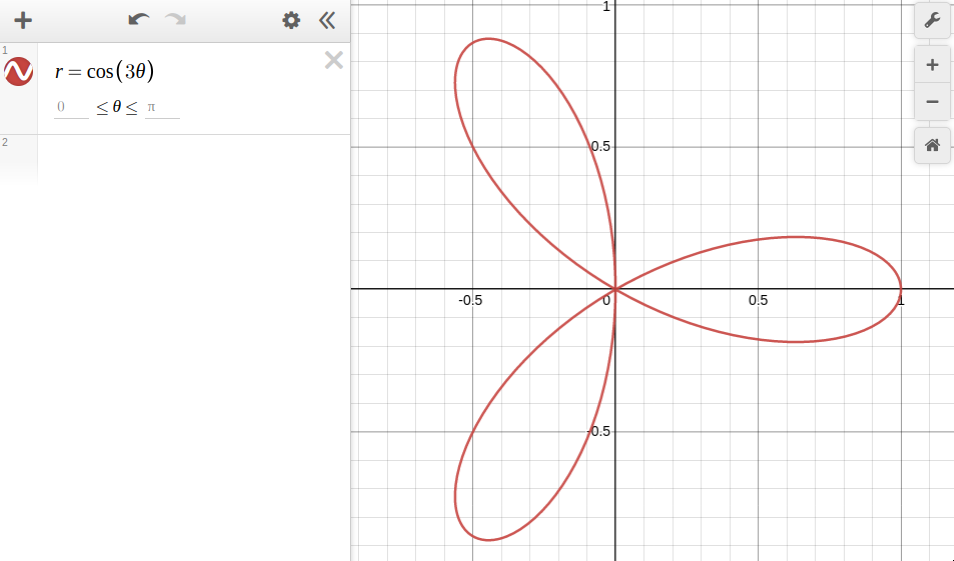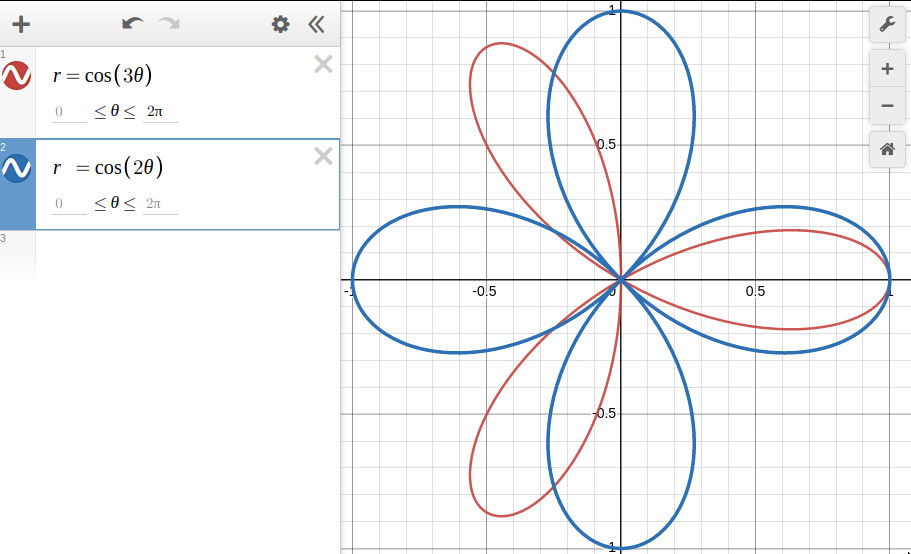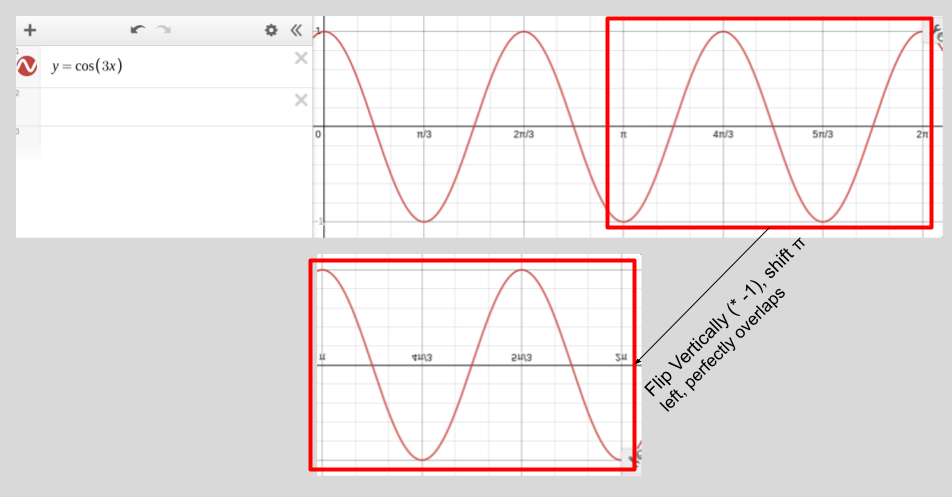A Proof About Roses
A proof about roses? Who would have thought!
In this case, a rose is a shape generated in a polar graph from the equation
\[r = A\cos(n \theta + \phi)\]graphed in the domain \([0, 2\pi]\).

However, something peculiar happens when you change the coefficient to \(\theta\) (\(n\)).
When \(n\) is even, \(2n\) petals are produced. On the other hand, when it is odd, \(n\) petals are produced (after \(\pi\), the petals go back over on themselves)!

My teacher said that there were proofs, but they involved calculus, so naturally I took it upon myself as a challenge to prove it without calculus!
The Proof Follows:
Assume for the proof that \(n \in \text{the set of all odd numbers}\).
At \(\pi\), \(\cos(n\theta)\) will always be \(-1\), while \(\cos(2n\theta)\) will always be 1.
Proving the above statement will allow us to conclude the proof.
Recall the function for period of a sinusoidal: the period of a function of the form \(\cos(mx)\) is \(\text{period} = \frac{2\pi}{m}\). Rearranging this with some algebra, we get \(m = \frac{2\pi}{\text{period}}\). At \(2\pi\), \(m\) periods will have been completed, so it follows that at \(\pi\), \(m/2\) periods will have been completed. If \(m\) is an odd number, as it is in our case, then the amount of periods completed at \(\pi\) will have a fractional component of \(1/2\). When the amount of periods completed has a fractional component of \(1/2\), in a regular cosine curve, it means that the function output must be \(-1\) because that is the value of cosine at half a cycle.
Conversely, we can prove that where the coefficient is even, in the case of \(\cos(2n\theta)\), the output at \(\pi\) must be \(1\) with the same logic. At \(\pi\), \(2n/2 = n\) periods have been completed, which means that the value must be the same as the start of a cycle in a cose graph which is \(1\).
Okay, we have now established this, but how does it help us? Recall that in a polar graph, negating the radius is the same as adding \(\pi\) to \(\theta\). Adding \(\pi\) to a cosine graph will shift it left by \(\pi\). So for any polar graph, taking the graph from \([\pi, 2\pi]\), multiplying it by -1, and translating it to the domain \([0, \pi]\) will produce the exact same graph. Since a graph in the second half of a period, when we multiply \(\theta\) by an odd number, from \([\pi, 2\pi]\), is \(-1\) times the graph in the first half of the period (because the periods are exactly \(1/2\) period out of sync), when you shift left and multiply the graph by \(-1\), it overlaps perfectly with the graph from \([0, \pi]\)! This causes there to be no new petals drawn.
And since multiplying \(\theta\) by an even coefficient leaves it at the start of a cycle at \(\pi\), it does not overlap on itself when multiplied by \(-1\) and shifted by \(\pi\) to the left. This causes new petals to be drawn where they don’t overlap.
Check out these examples for visual intuition (pay attention to graph label numbers: they are flipped):


QED!!!